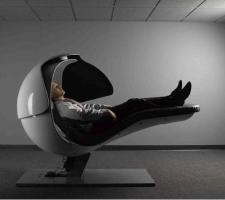September 22, 2014
Much anticipated BCO Specification Guide update for 2014 launched
 The British Council for Offices (BCO) has launched the much awaited new edition of its Specification Guide. Last updated in 2009, the 2014 issue aims to cement the publication’s position as the ‘definitive guide to office development in the UK’. As well as its traditional subjects of occupier density and building infrastructure and services, the latest edition covers topics such as building information modelling (BIM) rights to light, updates to BREEAM and amended planning law and building regulations as well as topical issues such as the inexorable rise of the ‘coffee shop workplace’ and the provision of cycle parks. Richard Kauntze, chief executive, claims the revised BCO Specification Guide represents a greater focus on the needs of end users.
The British Council for Offices (BCO) has launched the much awaited new edition of its Specification Guide. Last updated in 2009, the 2014 issue aims to cement the publication’s position as the ‘definitive guide to office development in the UK’. As well as its traditional subjects of occupier density and building infrastructure and services, the latest edition covers topics such as building information modelling (BIM) rights to light, updates to BREEAM and amended planning law and building regulations as well as topical issues such as the inexorable rise of the ‘coffee shop workplace’ and the provision of cycle parks. Richard Kauntze, chief executive, claims the revised BCO Specification Guide represents a greater focus on the needs of end users.
























September 16, 2014
Indoor air quality and the quest for a breath of fresh air in the workplace
by Justin Miller • Comment, Facilities management, Knowledge, Legal news, Workplace design
Edward Hopper, Office in a Small City, Metropolitan Museum of Art, NY
The modern workplace has to work harder than ever before. It must reflect corporate values, express something of the organisation’s brand, allow people to work to the best of their ability as well as look after their wellbeing, keep touch with the pace of changing technology and meet the demands of an ever changing legislative environment and keep costs down. All of these issues conflate around the challenge of providing a sustainable, comfortable and productive working environment in buildings that are filled with an increasing number of people and computers. It is estimated by the Building Research Establishment that even in a typical office each person and their technology will generate some 1500 W of energy per hour, the equivalent of the sort of fan heater that the EU is now keen to ban outright.
More →